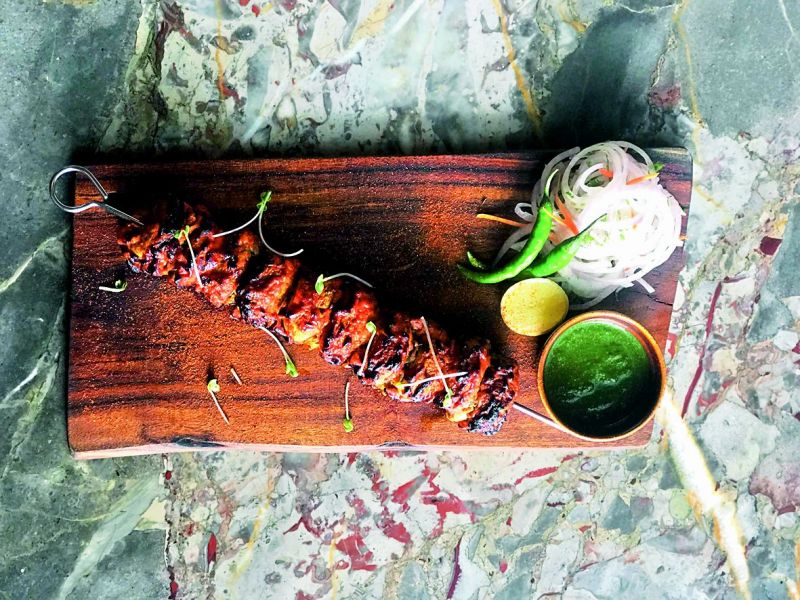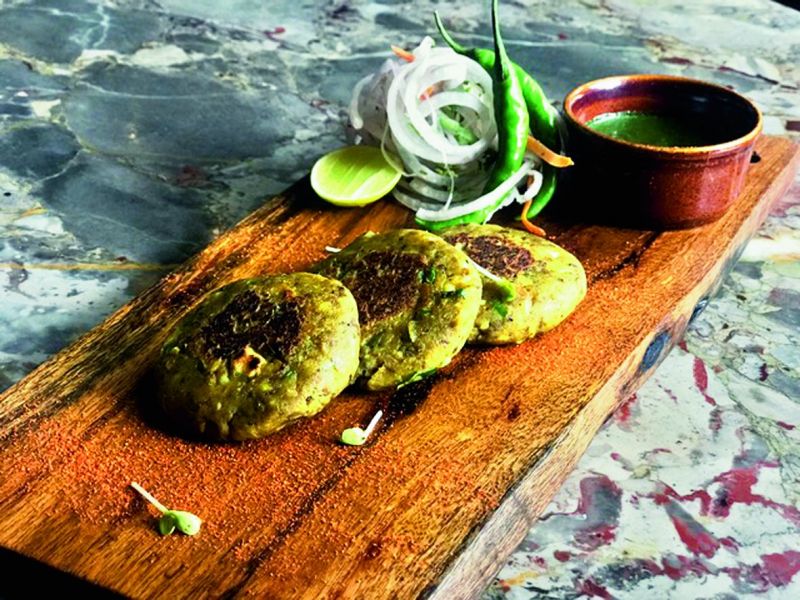Mushroom mania
Mushrooms are versatile and tasty and lend themselves to both Western and Indian styles of cooking.

Whilst mushrooms were viewed with trepidation until a few years ago as an exotic ingredient used primarily in Western and Chinese cooking, today they are available in local markets and very much a part of everyday cooking. The Indian housewife has learnt to incorporate them into daily vegetable mains as well as kebabs, pizzas and much more...
ALL ABOUT MUSHROOMS
The first misconception when it comes to mushrooms is that we consider or club it with vegetables. When actually a mushroom is a species of fungi. Veggies and fruits are edible plants that contain chlorophyll so they can participate in photosynthesis as we all learnt in biology classes in school. Mushrooms actually ‘steal’ the carbs they need from plants as they cannot perform this function on their own. There are apparently 1,40,000 species of mushrooms on earth, although only about 14,000 are known to us. Out of these only about 10 per cent are edible! Humans learnt through trial and error which ones weren’t edible.
In fact there is an inscription at a cemetery in France that goes something like this: “All mushrooms are edible — some only once!” However unless you are foraging in a forest, one wouldn’t be exposed to the wild varieties. As supermarket or city grocers normally stock button mushrooms which are safe to eat. Whatever your choice of mushroom, be it shiitake, button, oyster there are oodles of health benefits.
HEALTH BENEFITS
“You can’t buy good health but you can buy good mushrooms” says celebrity nutritionist Kashish Alimchandani. For starters mushrooms are extremely low in calories i.e. 30 kcal per 100 gram, have high amounts of proteins as well as other vitamins and minerals such as iron, copper, potassium, phosphorus, zinc, selenium, folic acid, B vitamins, calcium, ascorbic acid and vitamin E and A to boost immunity. They are extremely high in antioxidants and phytochemicals and contain large amounts of dietary fibers as well.
“Mushrooms aid in digestive problems, are great energy boosters, aids metabolism, supports nervous and cardiovascular health, decreases risk of cancer, protects against liver damage, reduces side effects of drugs, lowers blood sugar levels, are good for women with menstruation related issues and have various nerve restorative properties,” says Alimchandani. Mushrooms conventionally grew under the soil in the wild. “We suggest you avoid wet, spongy or shrivelled large mushrooms. The moist and sponginess of large ones lowers their quality. One should always select smaller mushrooms as they are fresh, firm and dry,” says chef Amitesh Singh Virdi, who is the executive chef at Punjab Grill.
SELECTION AND STORAGE
Use mushrooms as soon as possible as they are perishable in nature.
Store in the fridge for not more than two days.
Keep away from strong smelling fruits and vegetables. n Make sure you take them out of plastic as they need to breathe or they will shrivel up. n Store mushrooms in a cool and dry place. Wash the dried ones under cold running water to clear off dirt and grit. Once the mushroom is soft and wet, it is difficult to remove dirt.
Some recipes require soaking of mushrooms prior to cooking. In most cases you can spice or dice them and stir fry as per the recipe.
Khumb Makai Taka-Tak
200 gm boiled mushroom
100 gm boiled babycorn
50 gm boiled sweetcorn
10 gm red chilli powder
7 gm haldi
4 gm yellow chilli powder
Salt to taste
4 gm jeera powder
6 gm coriander powder
200 gm onion
200 gm tomato
20 gm green chilli
1 pc bayleaf
20 gm butter
20 gm cream
White gravy:
100 gm cashews
250 gm watermelon seeds
Method:
For white gravy — boil cashew and watermelon seeds. Grind them together to a fine smooth paste.
For tomato gravy — boil tomatoes and green chillies. Blend to a smooth fine paste. Cook for 15 to 20 minutes to make it thick
For onion tomato masala — heat oil in a pan, add bayleaf and chopped onion. Cook till golden. Add chopped tomatoes. Cook for 5 minutes. Add red chilli powder and salt.
Cut boiled mushrooms into half and boiled baby corn into three to four pieces depending on its size.
Heat oil in a pan. Add tomato gravy, white gravy and onion-tomato masala. Add boiled sweetcorn, baby corn and mushrooms.
Add jeera powder, yellow chilli, haldi, coriander powder, butter and cream. Cook for five minutes. Serve hot.
Barwaan Khumb Peshawar
10 pcs mushrooms
50 gm paneer
10 gm cashew
3 gm ginger
3 gm green chilli
20 ml oil
2 gm caraway seeds
3 gm yellow chilli powder
3 gm jeera powder
Salt to taste
2 gm haldi red marination:
50 gm hung curd
5gm red chilli powder
4 gm jeera powder
5 gm garam masala
Salt to taste
2 gm fenugreek

Method:
Remove stem from mushrooms. Finely chop the stems.
Clean and boil mushroom caps.
Fry cashew. Crush them.
Heat oil in a pan, add caraway seeds, green chilli and ginger. Cook for a while, add haldi and paneer.
Add mushroom stems. Cook till water evaporates. Add chilli, jeera powder and salt.
Stuff boiled
mushroom caps with this mixture.
Marinate with hung curd, red chilli powder, jeera powder, garam masala, salt, fenugreek leaves.
Cook in tandoor.
Serve hot.
Khumb Tikki
500 gm mushroom
100 gm potatoes
20 gm chopped green chili
10 gm ginger
Salt to taste
4 gm haldi powder
4 gm yellow chilli powder
4 gm jeera powder
4 gm caraway seeds
30 gm hung curd
40 gm processed cheese
15 gm crushed cashew nuts

Method:
for stuffing:
Mix hung curd and grated processed cheese.
Add jeera powder, fresh mint leaves, cashew and chopped green chilli.
Boil mushrooms, and chop.
Heat oil in a pan, add green chili, chopped ginger, caraway seeds and haldi. Add chopped mushrooms and cook well till water has evaporated. Add jeera powder, yellow chilli powder and salt.
Boil potatoes. Mash them to a smooth paste.
Mix potatoes and mushroom masala.
Make small balls from the mixture and make a small insertion with a finger.
Add curd and cheese stuffing. Cover with the mushroom mixture and flatten them out to make a tikki.
On a hot griddle, add oil and pan roast the tikki for four to five minutes, turning them over till cooked.
Serve hot.
